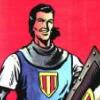Este es un articulo clasico sobre como leer la playa. Está en ingles, así que el trabajo de traducirlo se lo dejo a otro. Es muy interesante y se aprendenn cosas de muchas utilidad.
Reading the Beach for Soft Structure
by Chris "Gil" Gillin
If you want to improve your chances of catching fish on the beach, you need to become part hunter. Indiscriminately pulling up and casting into a place that "looks as good as anywhere" can be equated to playing the lottery.
Those of us who fish Assateague Island, are often found trolling the sand in our trucks watching the wave action and visualizing the "soft structure". Contrary to some beliefs, fishing the "high surf" is a thinking man's game. One must look "through" the water. Observe wave action as energy in motion. More often than not, the gulls won't be directing you to the honey hole.
The structure we seek, is elusive at best! It is carved by mother-nature and the contour changes with the weather. More often than not, once you think you have it figured out; keeping your spot a secret, you find to your dismay that it's disappeared.
I hope to give you a few tools here that will make you more successful in the open surf. My artwork may rival that of any kindergarten class, but I hope it helps in illustrating the topic.
The four most common structures I have experienced since I began fishing Assateague 17 years ago are: Sloughs, Points, Cuts, and Bowls.
Sloughs: This is the most common structure encountered on the beach. Basically, it is a lane of fairly deep water bounded by the beach and a sandbar. The sandbar is often referred to as the outer and inner bar, which usually come into play when trying to drop a bait on the inner or outer sloping edge.
The sandbar can be visualized by noting the white-water. As in reading any of these structures, the waves tell the tale. Waves are simply energy traveling through a medium. Underwater turbulence created by the wave extends under the wave 1/2 of it's wave height. As the ocean floor becomes shallow, as in the case of a sandbar, the turbulence is projected towards the surface creating "white water".
Sloughs are the hunting ground for "tiderunners". Bait fish travel through the lane and are trapped between the two walls of sand. The debate as to which tide is better will always be a factor in a fisherman's plans. Let me just say, do not ignore a good slough during low tide! I have seen schools of stripers and blues come through the lane at low tide on a search and destroy mission, hitting every bait within 1/2 mile. Also, do not ignore the sloping edge of the beach closest to you bordering the slough. Keep one rod in close. Often, the tiderunners patrol the walls of the slough, as not to scatter the bait.
Points: Most people can see a point since it is pretty obvious from a distance, but it's sometimes harder to see when right on it. If you see one from a distance, pick a landmark as a reference. This spit of sand sticking out into the ocean is a perfect platform to get some added casting distance. As previously noted, the white water is turbulence and that is what Rockfish love! As the tide rises, fish will come up on that bar or trap bait against it.
Cuts: Cuts are the way in… and out, for bait fish and tiderunners. This structure is best hunted out at low tide, as it is not as obvious when the tide comes in. The turbulence created by the rising sandbar is interrupted. The waves come through the cut as rolling waves instead of cresting ones, due to the added depth. As illustrated, the currents are often swirling.
As in the slough, this is the place to meet up with a big tiderunner. At low tide, large volumes of water will be heading out to sea carrying bait fish from the slough, a perfect ambush spot for a hungry and opportunistic Blue or Striper!
Bowls: This structure is by far the most exciting structure I've ever seen occur. It doesn't happen often, but when it does, standby! Many conditions cause this structure to form. First there is a cut in the sandbar, as we've already discussed.
The bowl is usually on relatively flat beach that has formed a second small inner slough. The pitch and elevation of the beach declines towards the bowl. In addition to the existing volume of water, is added the water running towards the bowl down the inner slough in a V shape. As this happens, it is met by the incoming waves coming through the cut and waves clap together.
The beach at the perimeter of the bowl is fairly steep and the water is churning up the bottom. Often, the beach is strewn with an unusually large amount of broken shells. You may need to occasionally move your bait, as the swirling sand will bury your weight quickly. Also, keep an eye on the condition of your line. The bottom is scattered with shells from clams and crabs which will shred your line.
If you find this structure, sit tight and don't give up on it! My friends (fondly referred to as the "Assateague Rats") and I found one last spring that produced skates for a few hours (I considered opening a skate clearing service); only to be followed by three days of big Blues and Stripers, the largest being over 42 pounds!


